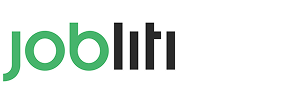How to Choose and Grow in a Career Path: A Complete Guide to Confident Decisions

Take Quiz to Find the Right Career for You
Start the Test →Start With Self-discovery: Strengths, Values, and Interests
Before any applications or interviews, clarity begins with a rigorous understanding of who you are and what kinds of problems you want to solve. Skilled professionals make career decisions by aligning energy, competence, and opportunity. That means inventorying the projects that energized you, the skills that feel effortless to practice, and the contexts where you repeatedly do your best thinking. This reflective groundwork reduces noise and accelerates momentum, because it narrows choices to the options that truly fit your life design.
As you examine peak moments, map the conditions that enabled them, and contrast them with draining situations, you will likely, over time, find career path clarity that matches your natural motivations and constraints. Consider using a strengths vocabulary to describe what you do uniquely well, then connect those strengths to specific work outputs. Naming the ingredients of meaningful work helps you say “no” faster and “yes” more decisively.
When your values are explicit and ranked, you can, step by step, find your career path with far less second-guessing because trade-offs become transparent. If growth, autonomy, and impact top your list, you can prioritize roles, companies, and managers that amplify those themes. Add constraints like commute, salary bands, and schedule to maintain realism, and then translate everything into a short, testable hypothesis you can validate in the market.
- List three problems in the world you care about fixing and describe how you’d approach them.
- Collect feedback from colleagues on moments when your contribution changed the outcome.
- Write a “perfect workday” narrative to spot patterns in pace, collaboration, and tools.
Research the Market: Roles, Skills, and Opportunity Signals
Once your personal thesis is drafted, shift into external research so your choices map to real demand. Scan job boards, labor reports, and industry newsletters to identify roles that are expanding, stable, or contracting. For rapid orientation and idea generation, a well-designed free career path finder can surface occupations you might not have considered, while also suggesting the competencies most valued by employers.
| Role | Core Skills | Suggested Entry Steps | Growth Outlook |
|---|---|---|---|
| Data Analyst | SQL, Python, Storytelling | Portfolio projects, Kaggle, internships | High in tech and services |
| UX Designer | Research, Wireframing, Prototyping | Case studies, design sprints, mentoring | Strong in product-led firms |
| Project Manager | Planning, Stakeholders, Risk | Certifications, shadowing, retrospectives | Stable across industries |
| Sales Engineer | Pre-sales, Demos, Communication | Technical upskilling, demo library | Rising with SaaS growth |
While salary and prestige can be tempting, it’s smarter to balance compensation with learning velocity, manager quality, and portfolio-value. In addition to employer research, an exploratory find my career path quiz can highlight preference patterns you might overlook, especially when combined with informational interviews. Treat every insight as a data point, not a verdict, and look for repeating signals over isolated anecdotes.
- Build a short list of three roles and compare the required skills against your current strengths.
- Schedule weekly coffee chats and ask about day-to-day realities, performance metrics, and advancement.
- During reflection time, use a journaling prompt and keep a weekly note anchored by a find my career path mantra to reinforce your direction.
Prototype the Fit: Experiments, Projects, and Feedback Loops
Big decisions become easier when you reduce them to a sequence of small, low-risk trials. Design “career sprints” that last two to four weeks, each focused on one targeted skill and a tangible deliverable. As you gather evidence from these sprints, a rigorous career path finder test complements your observations by quantifying interests, work styles, and environmental preferences. Pair qualitative stories from mentors with quantitative scores to triangulate your direction.
Short-term projects, shadow days, and volunteer gigs expose you to the messy reality of real work, which refines expectations and boosts confidence. To prioritize your next sprint, a carefully built free career path finder test helps you rank options by curiosity and feasibility, which keeps momentum high. After each sprint, run a retrospective: what energized you, what drained you, and what skill moved the needle the most.
- Create a public portfolio and write brief case notes about your process, not just the outcomes.
- Join a peer circle for accountability and fast feedback on drafts, demos, or pitch practice.
- When a role resonates, map a six-week plan showing how you could find your perfect career path through layered, real-world exercises.
Decide and Execute: Frameworks, Plans, and Measurable Progress
After several cycles of research and prototyping, consolidate the evidence and score your options with explicit criteria. Weight factors like learning curve, manager quality, team culture, upside, risk, and lifestyle fit. If uncertainty remains, you can apply a simple “explore–exploit” ratio and, over a set horizon, deliberately test find your career path decisions before committing fully. Clarity compounds when you document thinking, decisions, and lessons learned.
Translate the winning option into a 90-day roadmap with weekly deliverables and success metrics. Build time blocks for skill drills, networking, application batching, and interview prep. To calibrate your plan, a concise find career path test can act as a baseline, which you revisit after each milestone to monitor confidence and fit. Plans that incorporate reflection windows and decision checkpoints evolve faster and with less stress.
- Define three lead measures you control, such as outreach volume, practice hours, and portfolio updates.
- Set trailing indicators like interviews secured, referrals earned, and skills endorsed.
- Install review rituals on Fridays to adjust goals based on data, not mood.
FAQ: Practical Answers for Confident Career Decisions
How long should I spend exploring before committing to one direction?
Most people benefit from four to eight weeks of structured exploration, provided each week includes research, a practical experiment, and one mentor conversation. During that period, you should narrow choices and collect evidence on skills, enjoyment, and opportunity. If progress stalls, adjust the scope of experiments or swap industries, and remember that small reversible bets reduce risk while building experience.
What tools actually help me evaluate fit without wasting months?
Useful tools combine reflective prompts, skill checklists, and brief simulations that mirror real tasks. In addition to portfolio mini-projects and manager interviews, many candidates gain momentum by trying a free aptitude test find career path option that benchmarks interests and strengths. Treat results as directional, then validate them with targeted projects and conversations inside your chosen field.
How do I choose between two roles that both look promising?
When options are close, rank them using a weighted scorecard built around your values, growth, and lifestyle constraints. Run a two-week micro-internship or shadow day for each role, and record how you felt at different moments in the workflow. If the scores tie again, choose the path with the higher learning velocity and better manager quality, because those two variables compound faster than compensation alone.
Where can I practice without risking my current job or reputation?
Low-stakes arenas include open-source projects, hackathons, community nonprofits, and instructor-led cohorts with built-in feedback. For additional structure, some platforms provide a free career path finder quiz online free that pairs quick diagnostics with project ideas you can share. As you gather artifacts and testimonials, update your portfolio to demonstrate progress and signal commitment to hiring managers.
How do I stay motivated if my first attempts don’t work out?
Momentum grows when you focus on process goals you control and reflect weekly on what improved. Break big ambitions into small, winnable sprints, and celebrate the skills you strengthen along the way. Surround yourself with peers who are also iterating, and rotate between exploration and execution to prevent burnout while keeping your learning curve steep.
